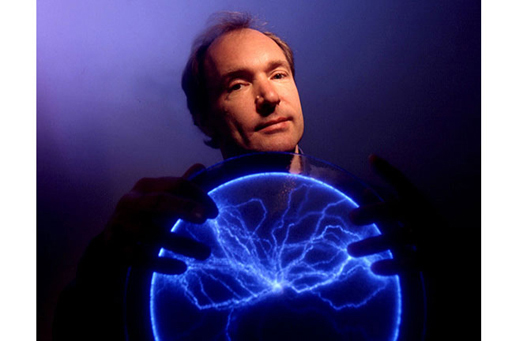3.4 The internet is not the world wide web
This section is part of the amber and green pathways.

We’ve all done it. We’ve all been browsing a website and said ‘I’m on the internet!’.
This is true, but misleading, if for no other reason than the internet dates from 1982 (with its roots as far back as 1969) but the world wide web only came into being in 1990 thanks to Sir Tim Berners-Lee.
The following table illustrates the major differences between the internet and the world wide web. Primarily, the internet is infrastructure that provides global interconnectivity, whereas the world wide web enables information access and delivery over the interconnected infrastructure. This same infrastructure also supports several other services such as email, social networking, live streaming, etc.
| The Internet | The World Wide Web (WWW) |
|---|---|
| Beginnings in the 1960s | Early 1990s |
| Interconnectivity Infrastructure | Computer application |
| Uses several computing devices terms as ‘routers’ for the interconnectivity | User application front-end for information access (Web browser) |
| Supports communication between computers and their applications | Server application for storing and retrieving data to serve remote requests coming via the Internet |
| Primarily uses TCP and IP | Uses HTTP, HTTPS |
| Invented by a team of scientists in USA | Invented by a British scientist at CERN, Switzerland |
Before the advent of the world wide web, not only did fewer people use the internet (it took until 1998 for 100 million people to log on for the first time), but it wasn’t anything like the world wide web we know today – almost all commands had to be typed in – often using cryptic instructions, and what you got back – if you got anything at all – was plaintext. The world wide web not only meant that it was possible to use the internet’s resources without learning a whole new language, but it allowed for rich text, graphics, animation and sound to be delivered quite literally at the click of a button.
Part of the internet
At its simplest, the world wide web is nothing more than the part of the internet that can be accessed through the HyperText Transfer Protocol (HTTP) – another one of those standards that helps glue the internet together. HTTP allows two computers to exchange information as a series of requests (e.g. a request from your computer for a copy of the To do list page for this course) and responses (e.g. an Open University server delivers the contents of that page).
HTTP relies on TCP to set up the connection between the two machines, and it in turn uses IP to send and receive data. The most common applications that understand HTTP messages are web browsers such as the one you are using right now.
The world wide web is an example of hypertext – documents joined together using links. Every time you click on a link, HTTP is used to request a new page from a web server using TCP port 80. The content for the page is delivered to your computer, again through port 80 and interpreted by a web browser which formats the data in a human readable manner.
Designed to be open
The world wide web was designed from the very start to be an open environment which encouraged people to set up their own web servers and to write web pages. To encourage its uptake, all of the documentation that explains HTTP, and other standards that have grown up around the web, are publicly available to anyone wishing to develop software for the web. Likewise, the computer language used to format web documents, the HyperText Mark-up Language (HTML) is not only fully documented online, but is extremely easy to use.
Apart from the world wide web, the internet itself is used for a much wider range of services including email, instant messaging and file transfers. The internet’s flexibility comes down to the flexibility of the underlying protocols – so long as information can be stored in IP datagrams – and just about anything can – it can be moved around the internet.
Interview with Tim Berners-Lee
Transcript
Listen to this interview. Towards the end, Tim Berners-Lee mentions a number of things that will be needed to make the world wide web achieve its full potential. One of these is digital signatures, which can be achieved using cryptography – our topic for next week.
Please complete Quick poll #15 [Tip: hold Ctrl and click a link to open it in a new tab. (Hide tip)] now.
Open the poll in a new window or tab then come back here when you’re done.
Next, you have an opportunity to review your learning of the course so far in the Week 4 compulsory badge quiz.
